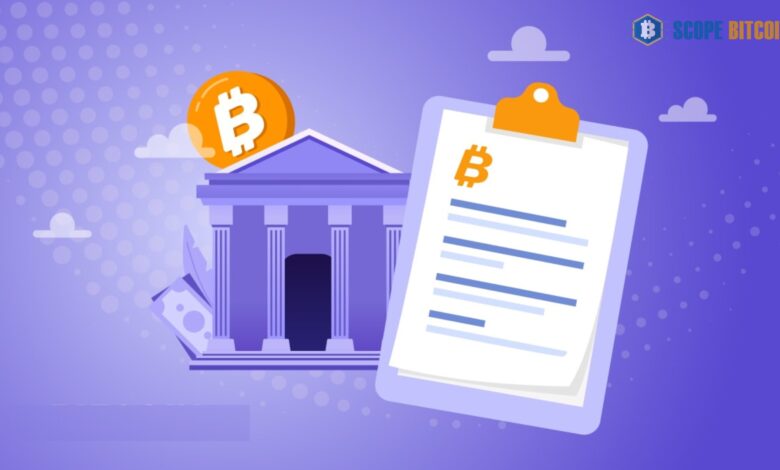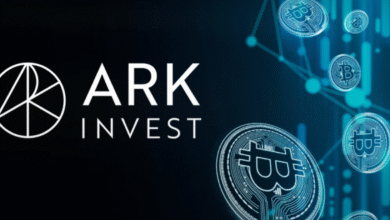
Bitcoin-backed Loans How to Get One?
Bitcoin-backed loans are an innovative twist on the standard lending model. They combine regular lending with cryptocurrencies and provide. Bitcoin holders have a novel means of gaining access to liquidity by allowing them to use their digital assets without ultimately having to sell them. The procedure has been more streamlined due to the rise of cryptocurrency lending platforms, which has enhanced the accessibility of such loans.
What is Cryptocurrency Lending?
Cryptocurrency lending offers exciting new opportunities to borrow and invest with cryptocurrencies, transforming how users engage with digital assets. The primary players in this system are the lenders, who, thanks to the cryptocurrency market’s unpredictable nature. How can you earn higher interest rates than those on conventional savings accounts?
However, borrowers can access funds without selling their cryptocurrency assets. Collateralised loans in stablecoins or fiat currencies allow borrowers to access liquidity without giving up ownership of their assets, typically other cryptocurrencies.

The proliferation of decentralized finance (DeFi) platforms is crucial to propelling this innovation. These platforms automate lending through smart contracts, eliminating intermediaries while increasing security and transparency. Platforms such as Aave, Compound, and MakerDAO have emerged as leaders in the DeFi field, demonstrating the technology’s ability to revolutionise financial services.
To participate in decentralised lending via DeFi, one typically uses Wrapped Bitcoin (WBTC), which is compatible with intelligent contract networks like Ethereum, Arbitrum, Polygon, or Solana and may be used to lend Bitcoin (BTC) $60,822.
Types of Crypto Loans
Borrowers’ cryptocurrency assets are usually used as collateral when they apply for a crypto loan. The collateral can be used to repay the loan if the user defaults, just like a mortgage or auto loan. Some platforms require overcollateralisation, limiting users to borrowing only a certain percentage of their collateral. Lenders can reduce their risk and obtain better loan conditions through over-collateralised loans, in which the value of the collateral exceeds the loan’s worth. On the other hand, collateral is not needed for uncollateralised loans, also called unsecured loans. A respectable credit history and a track record of on-time payments are two main criteria for approving these loans.
Users primarily have two alternatives to using cryptocurrency as collateral. To start, centralized finance (CeFi) lending entails taking out a loan from a cryptocurrency or blockchain firm that operates similarly to conventional banks but is privately owned and operated, providing higher security.
Secondly, DeFi loans allow borrowers to access funds through decentralised blockchains. Unlike traditional financial institutions or centralised governments, DeFi technologies allow consumers to manage their digital assets through an open-source network. Conversely, the lender can guarantee the loan if they deem it necessary.
Understanding Bitcoin-backed Loans
Borrowers can safely access fiat or stablecoins by using Bitcoin as collateral in a Bitcoin-backed loan, which operates on the principles of collateral management. This financial route is highly regarded for its security. Bitcoin, in particular, stands out because of its relative stability compared to other crypto assets and its capacity to unlock the second-highest loan-to-value (LTV) barrier, behind only stablecoins.
There is a relationship between the loan amount and the appraised worth of the acquired asset, called the LTV ratio. Lenders use it as a significant indicator to determine risk; lower LTV ratios usually mean less risk. Numerous CeFi and DeFi platforms allow loans backed by Bitcoin. These platforms often prioritise strong security measures and adhere to custody rules that align with the values of Bitcoin holders.
Loan products created on layer-2 Bitcoin networks, such as Stacks, are one Bitcoin-native solution among many. While offering Bitcoiners some self-custodial access, these solutions intrinsically depend on the Bitcoin network’s security.
How to Get a Bitcoin-backed Loan
Before obtaining such a loan, borrowers must have a comprehensive understanding of the collateral management process, the eligibility requirements, the potential implications of defaulting on the loan, and the available refinancing possibilities.

The borrower applies for a loan
Loan applicants begin the process by submitting their applications through a portal specialising in Bitcoin-backed financing. During the application procedure, they communicate information regarding. The collateral, often Bitcoin, defines the loan amount they wish to receive.
The borrower will deposit the specified amount of Bitcoin into a cryptocurrency wallet issued by the lending platform once the loan has been approved. For the duration of the loan, this Bitcoin will be held in escrow as a kind of security.
The lending platform determines the LTV Ratio
The platform then determines the LTV ratio, which establishes. The maximum loan amount is relative to the collateral’s value once it has evaluated the asset values of the Bitcoin collateral. If borrowers deposit $10,000 worth of Bitcoin. The loan-to-value ratio is 50%; they can borrow up to $5,000 to cover expenses. The loan disbursement process begins upon approval.
The loan disbursement process begins once the loan has been approved. The borrower will get the amount in the currency or stablecoin of their choice. The Bitcoin collateral is still safely stored in the site’s wallet. Regular interest payments, generally made every month, are made by the borrower during the loan duration. The amount of the loan and the creditworthiness of the borrower. The market conditions are some of the elements that come into play when determining the interest rate.







